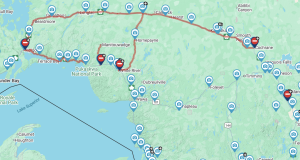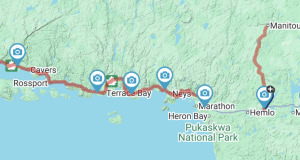The Ontario government released the province’s new elementary math curriculum to better prepare students for work in a rapidly changing world, strengthen math competence and improve grades. The curriculum was developed over two years in consultation with parents, math educators, academics and math education experts, and is designed to reverse a decade of declining math scores. It will be available to students across the province beginning in September 2020.
Details were released today by Premier Doug Ford, Christine Elliott, Deputy Premier and Minister of Health, and Stephen Lecce, Minister of Education.
“I made a promise to parents that we would fix the broken education system we inherited, get back to basics, and teach our children the math fundamentals they need for lifelong success,” said Premier Ford. “Today, our government is delivering on that promise with the first-ever math curriculum in Canada for Grades 1-8 that includes the teaching of coding and financial literacy, both critical skills that will help our students prepare for and succeed in the modern world and in the modern workforce.”
The new math curriculum for Grades 1-8 will:
- Build understanding of the value and use of money through mandatory financial literacy concepts;
- For the first time, teach coding or computer programming skills starting in Grade 1 to improve problem solving and fluency with technology, to prepare students for jobs of the future;
- Use relevant, current, and practical examples so students can connect math to everyday life;
- Put a focus on fundamental math concepts and skills, such as learning and recalling number facts.
“For over a decade, too many students were lacking everyday math, financial literacy, and numeracy skills,” said Minister Lecce. “The new curriculum will help students solve everyday math problems, enshrine financial literacy in the early grades, and better prepare students for the jobs of tomorrow by ensuring every student learns how to code.”
The Ministry of Education is also changing how it makes curriculum available to better reflect how Ontarians consume information. The new math curriculum will be the first uploaded to the new Curriculum and Resources website, a digital space where anyone can access curriculum and learning resources. This platform will help parents, students, and teachers see connections between learning in different grades and subjects.
“Our research team provided an extensive background research report giving the Ministry of Education the most up-to-date research and analysis of other curricula,” said Dr. Christine Suurtamm, Vice Dean Research, and Professor of Mathematics Education, Faculty of Education, University of Ottawa. “Ontario’s new mathematics curriculum builds on what we know about student learning and how students develop an understanding of mathematics. It supports all students to be math learners with opportunities to learn foundational mathematics and engage in current topics. The goal is to support how students use math in the world today, and how they will use math to make informed decisions in the world ahead of them.”
Quick Facts
- The last update to Ontario’s elementary math curriculum was in 2005.
- The new elementary math curriculum is part of the government’s four-year math strategy to ensure that students can build the confidence and skills they need to excel in math.
- The elementary report card will be updated to align with the new curriculum and provide an overall mark in math, along with comments on the different strands of the curriculum to give parents a better overall assessment of how their child is doing.
- Grade 3 and 6 students will not participate in Education Quality and Accountability Office (EQAO) assessments during the 2020-21 school year, as the ministry works to align the assessments with the new curriculum. Students in Grade 9 and Grade 10 will continue to take the mathematics assessment and Ontario Secondary School Literacy Test (OSSLT), respectively.
- The Ontario Government is committed to supporting educators in effectively implementing the new elementary math curriculum. This includes providing classroom-ready resources for each grade, as well as in-depth virtual training for teachers, principals and board staff.
- Educators will also continue to benefit from investments in professional development and math supports, including $10 million for board-based math learning leads, $15 million for school-based math learning facilitators, and $15 million to support release time for educators to become expertly familiar with the curriculum.
A modern elementary math curriculum
To better support students in Ontario, the government has released a new math curriculum for Grades 1 to 8. The new curriculum is part of the government’s four-year math strategy designed to improve student math grades, help students solve everyday math problems and better prepare students’ for the jobs of tomorrow.
The Ontario Curriculum: Mathematics, Grades 1 to 8 was last updated in 2005. Today, there have been advances in education on:
- how students learn and engage in math;
- the role financial literacy and coding plays in a student’s life today and in the future;
- how technology can enhance learning; and
- how to access and interact with information.
How the new math curriculum was informed
In the Fall of 2018, parents, educators, organizations and the general public provided feedback during the Ministry of Education’s provincewide consultations. More than 70 per cent of respondents identified the following areas that were needed to improve academic achievement in math:
- focus on fundamental math concepts and skills;
- include practical examples of math;
- enhance teacher training and resources; and
- give elementary students more opportunities to learn about science, technology, engineering and math (STEM) disciplines.
The new curriculum was also informed by expert knowledge and research, best practices from other jurisdictions across Canada and around the world, and input from stakeholders, academics and math education and industry experts.
For the first time, the curriculum was placed under a market sounding lens, to ensure private and non-profit sector leaders could inform the development of the curriculum. The feedback played an invaluable role in ensuring the curriculum aligns with the job market and the skill set required to succeed in today’s competitive marketplace.
Further teaching resources and supports will be available, including providing classroom-ready resources for each grade, as well as in-depth virtual training for teachers, principals and board staff.
Changes and key learning
Changes to the curriculum include:
- focusing on fundamental math concepts and skills, such as learning and recalling number facts – including multiplication fact tables from 0 to 12 (0×0 to 12×12); and
- using current examples that help students see math in their everyday lives.
Key learning to ensure students are future-ready includes:
- teaching coding skills starting in Grade 1 to improve students’ ability to become problem solvers and develop fluency with technology;
- developing an understanding of the value and use of money over time and consumer awareness through learning about financial literacy; and
- creating and reading infographics and collecting and analyzing data to make arguments, and inform decisions and predictions
Social-Emotional Learning Skills
The development of social-emotional learning (SEL) skills supports students’ overall health and well-being. SEL skills help students develop confidence, cope with challenges, learn from mistakes, build perseverance, and think critically. Throughout the curriculum, students learn to apply these skills to help them deepen their understanding of math concepts and apply them in their everyday lives.
During their education, students will acquire social-emotional learning skills as well as transferable skills such as critical thinking and problem solving, self-directed learning, collaboration, communication, and digital literacy.
Students apply these everyday skills as part of their learning across the other five parts of the curriculum, and in their experiences at school, at home and in the community. These interconnected skills help foster overall health and well-being, and the ability to learn, build resilience and thrive.
Additional Resources
- A grade-by-grade overview and ways for parents to support math learning at home can be accessed on the ministry website.
- Additional resources and supports on the elementary math curriculum will be provided in the coming weeks and months for teachers, principals and board staff. This includes providing classroom-ready resources for each grade, as well as in-depth virtual training for teachers, principals and board staff.
- Ontario and Marten Falls First Nation Sign Historic Agreement to Unlock Ring of Fire - November 28, 2025
- Ontario Investing in Winter Roads Network - November 25, 2025
- Ontario Launches Feasibility Study to Build East-West Pipeline and Energy Corridor - November 3, 2025
 Wawa-news.com You can't hear the 'big picture'!
Wawa-news.com You can't hear the 'big picture'!

